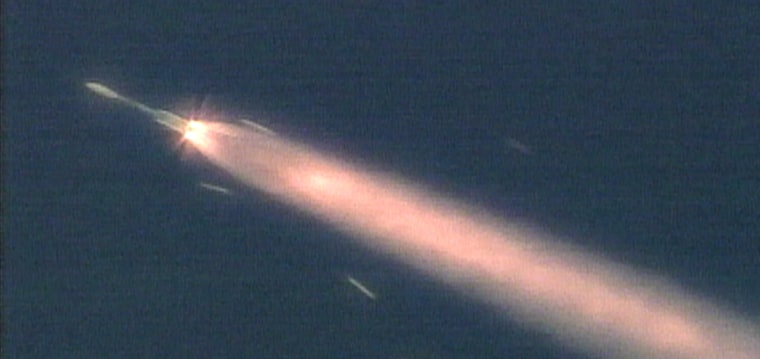NASA on Tuesday launched into orbit a $750 million satellite conceived during the Eisenhower administration to test two of Albert Einstein’s fundamental predictions about the universe.
The Gravity Probe B satellite blasted off from an oceanside pad at California's Vandenberg Air Force Base aboard a Delta 2 rocket, one day after concerns about high upper-level winds and flight software led NASA to call off the first launch attempt.
The satellite separated from the rocket 75 minutes later and began its 18-month mission, officials said.
The launch of the 6,800-pound (3,090-kilogram), Lockheed Martin Corp.-built spacecraft marked the end of the longest development period of any mission in NASA's history.
Scientists first proposed what became Gravity Probe B in 1959, a year after the launch of the first American satellite and the creation of NASA. Over the decades, it weathered more than a half-dozen attempts at cancellation amid concerns over cost overruns and technical hurdles.
The Earth-orbiting satellite was built to test elements of Einstein’s theory of general relativity — namely, predictions about the nature of space and time, and how the rotating Earth warps and twists the fabric that combines the two.
The mission is widely expected to prove Einstein right, producing what one NASA official called a “ho-hum” result.
Scientists at Stanford University designed the spacecraft around four spheres of quartz the size of ping-pong balls. They are the most perfect spheres ever made.
Theory predicts that by lining up the satellite in space with a distant star and setting the balls spinning, their alignment should shift off kilter in small but measurable amounts in response to Earth's mass and rotation.
Einstein proposed in 1916 that space and time form a fabric that can be curved by the presence of Earth and other large celestial bodies. The curving warps the fabric like the depression a gymnast creates by standing on a trampoline.
Two years later, other scientists suggested that the rotation of a large body, like Earth spinning on its axis, should drag the fabric of space-time with it, twisting it as it does.
Scientists have measured the warping effect before. The twisting effect, called frame-dragging, has never been directly detected. Gravity Probe B was built to detect both.
Gravity Probe B should spend 44 days orbiting 397 miles (635 kilometers) above Earth doing calibration work before its mission begins in earnest.
Scientists expected to have a “serious test of general relativity” five weeks after that, said Francis Everitt, the mission’s main scientist.
Gravity Probe A was a separate mission, launched in 1976, that looked at the warping of time.
